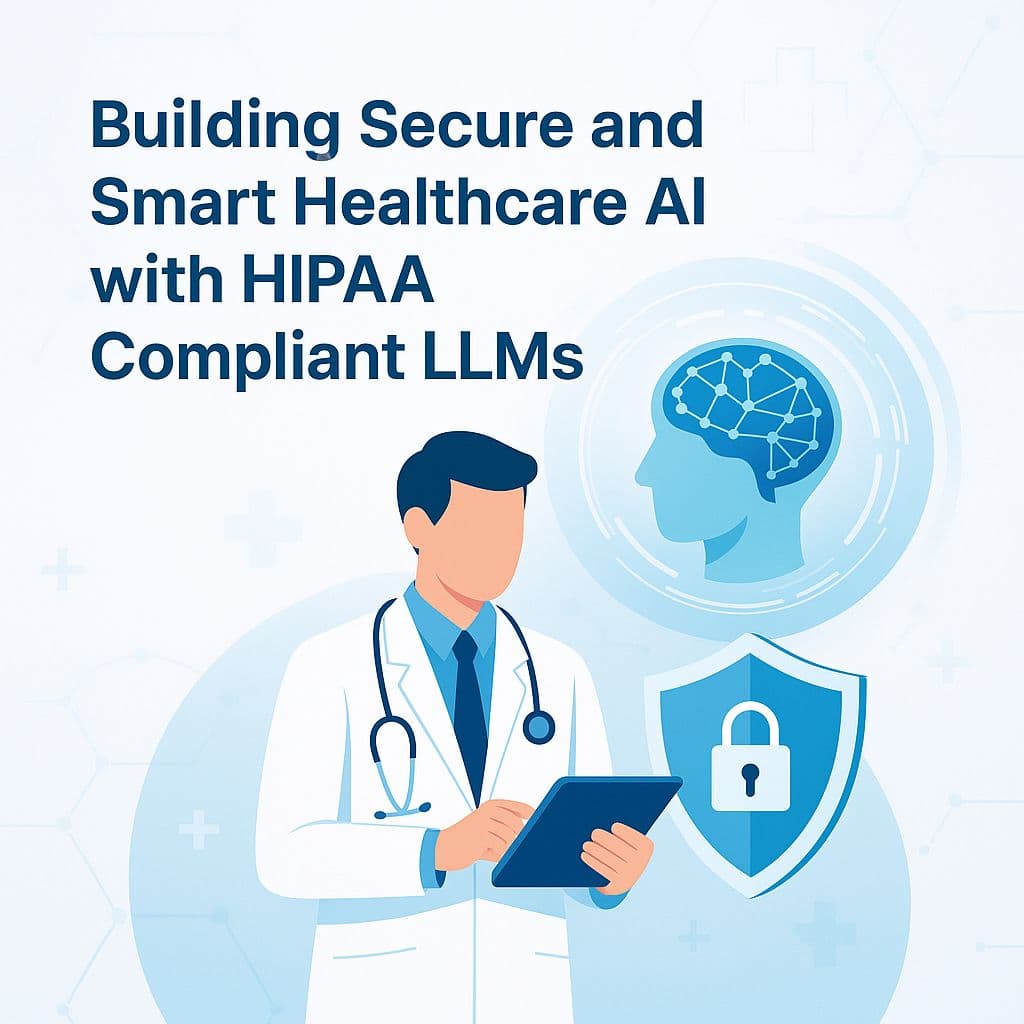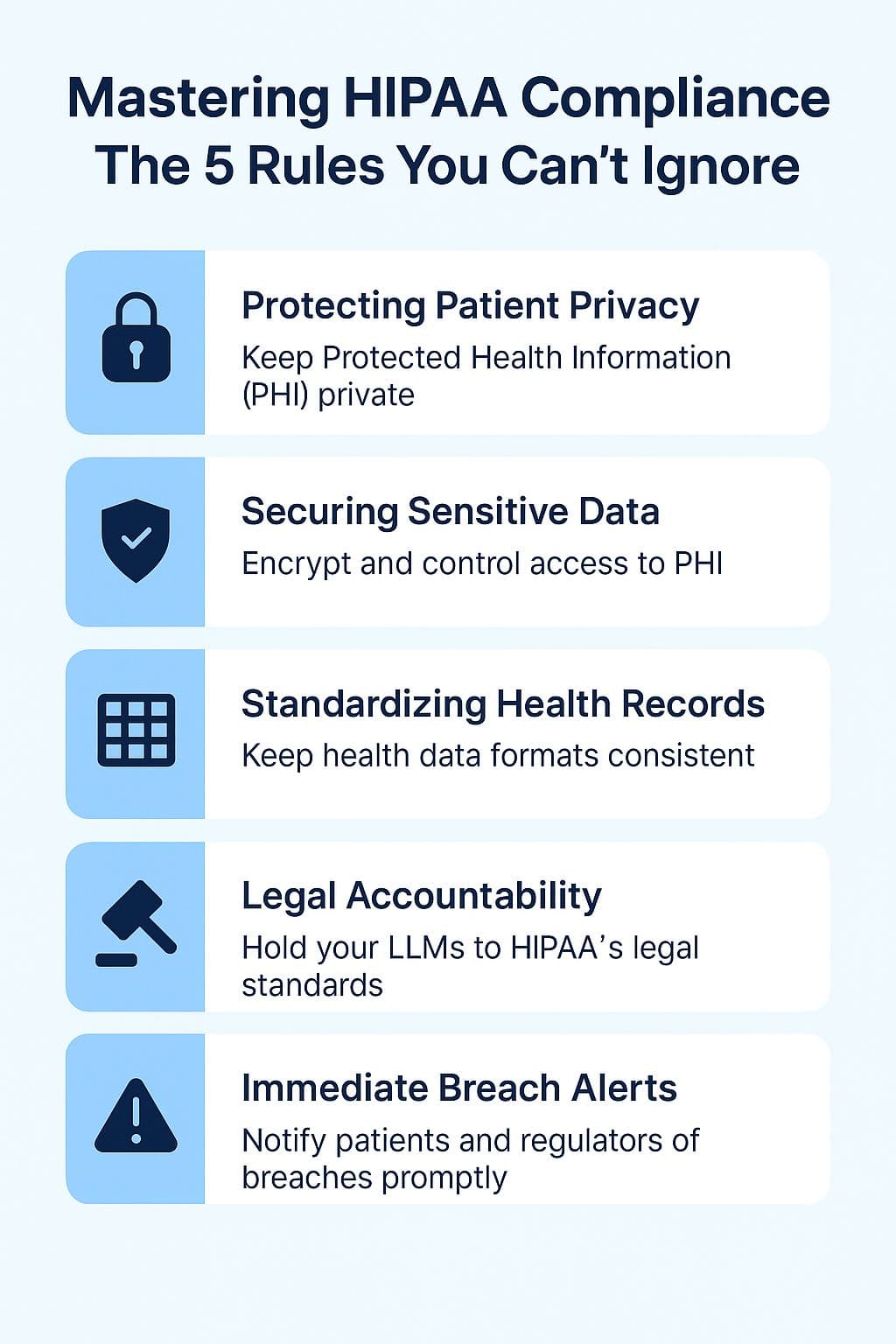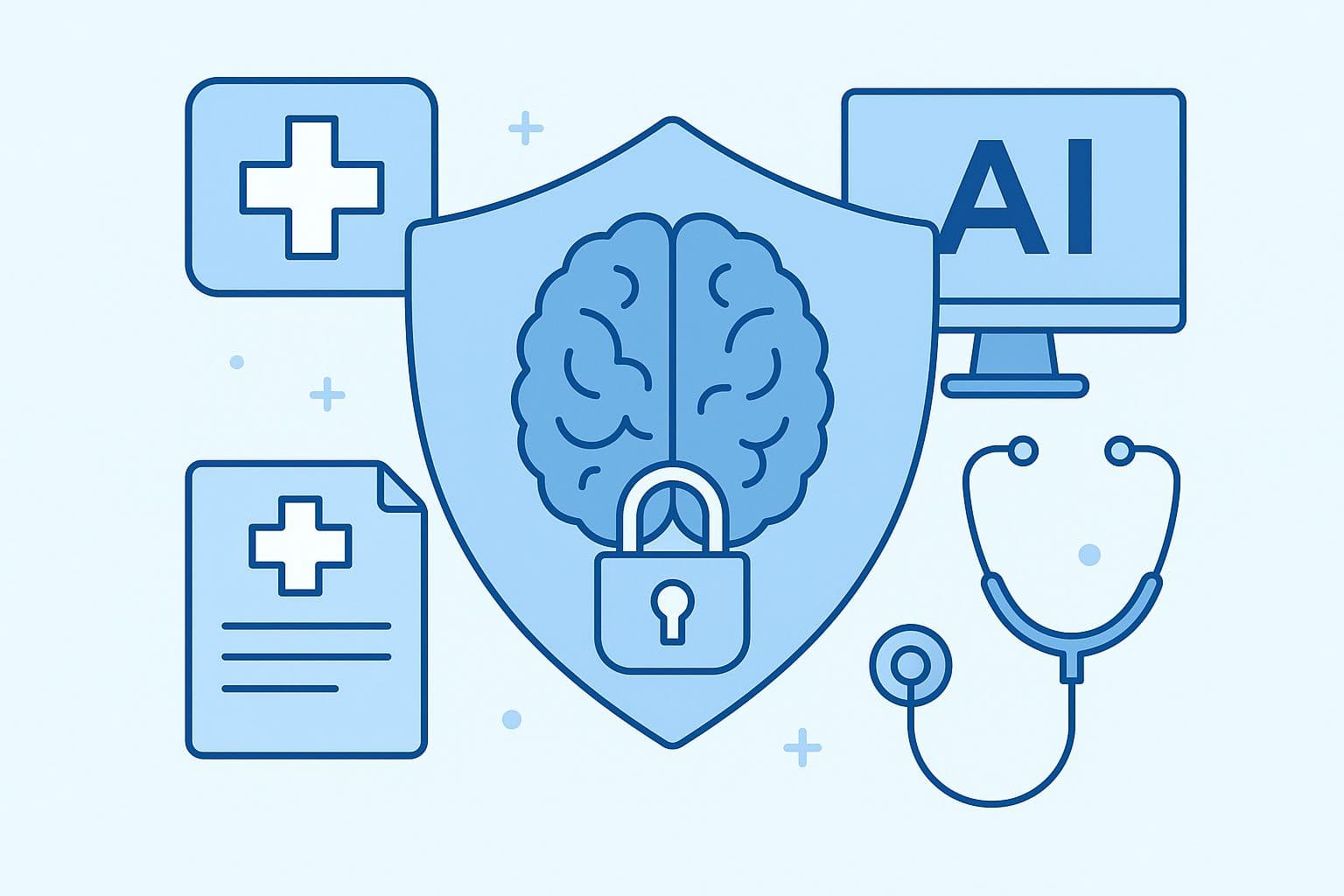Why is everyone talking about healthcare AI, but nobody mentions HIPAA compliant LLMs? Well, in 2025, integrating large language models in hospitals in insurance firms isn’t just about smarter workflows anymore. It’s more about taking care of patients' data with the same serious face as protecting lives. Here's the real catch: overlooking compliance can straight up cost you millions, with HIPAA fines soaring past $2M per violation.
That’s exactly where HIPAA compliance makes its heroic entry. Well, they aren’t just some random smart chatbots; they’re designed to keep patient privacy airtight while enabling science fiction-level digital healthcare experiences. But the real question is, can you really build scalable AI in healthcare without HIPAA-compliant systems, or is this the line between innovation and disaster?
In today’s healthcare world, AI can do amazing things, but only if it plays by the rules. This blog looks into why HIPAA compliance is non-negotiable, how HIPAA-compliant LLMs are reshaping care, and why skipping these safeguards could cost millions.

Mastering HIPAA Compliance: The 5 Rules You Can’t Ignore

You might be a bit confused, so here’s the reality: 68% of healthcare data breaches come from compliance gaps and not some random hackers with superpowers. While ChatGPT and other LLMs can effectively support healthcare operations, their HIPAA-compliant LLMs depend on how they are configured, secured, and utilized. Here are the 5 HIPAA rules they adhere to:
1. Protecting Patient Privacy
This rule ensures that the patient data (Protected Health Information) remains private. AI can’t just casually feed raw medical information into a model. It must perform de-identification, masking sensitive fields, addresses, and ID numbers before any AI interacts with the data.
2. Securing Sensitive Data
It asks you for prior encryption, secure servers, and strong access control so that the PHI isn’t being misused or somehow corrupted. However, for the AI systems, this clearly stands for encrypted prompts and responses, along with ensuring that only authorized staff can access all the outputs.
3. Standardizing Health Records
If your AI ends up generating health records, it needs to follow the specific formats to which all the healthcare systems adhere. Otherwise, your “smart” LLM might get you into real trouble with misinterpreted diagnoses, and can even lead to some serious consequences. Shortly, standardized data is not just some red tape; instead, it’s what makes every doctor, lab, and insurer speak the same language.
4. Legal Accountability
According to this rule, if an AI system is found to be mishandling the patient data, the government can investigate and instantly fine the organization, and sometimes, it can be more than $2M per violation. This makes this fact clear that compliance is no longer optional, but it is a legal responsibility and accountability with higher stakes.
5. Immediate Breach Alerts
This rule mandates that if your AI inadvertently exposes PHI, for example, if a chatbot generates identifiable information in an unauthorized chat, you are required to promptly notify the affected patients, relevant regulators, and, in certain cases, the media.
The transparency here isn’t just a formality or just for the sake of data protection; it’s about rebuilding trust and faith at the same moment it’s broken. To get a deeper understanding of HIPAA’s role in protecting patient data, check out our detailed guide on HIPAA Compliance for Healthcare Data Protection.
How Are Hospitals and Startups Benefiting from HIPAA AI?
Do you even know that HIPAA compliance AI deployment is revolutionizing healthcare for each and every stakeholder out there? Starting from the hospitals, clinicians, to even vendors, developers, and researchers are now building tools that blindly follow HIPAA’s 5 rules. Research institutions like CROs and various universities are also fairly inclined towards it, proving that secure AI is for everyone.
Here's how it is benefiting the health world effortlessly:
1. Healthcare Providers
Hospitals and clinicians are now more into building strategies, doing research, and scalability as they spend more time treating patients instead of paperwork. Also, Telehealth AI is here to reduce admin time by almost 40%, all while keeping PHI secure and standard.
2. Billing & Claims
AI brings together documentation, billing, and various claims, saving insurers $500K annually and cutting turnaround times by almost 30%. This helps in minimizing the errors and speeding up the process of compensation.
3. Ensuring Governance & Standards
They can also build EHRs, workflow tools, and studies in accordance with HIPAA’s 5 rules, while working with strong AI governance challenges that 85% of compliance officers have ranked as the top-most priority and concern.
4. Balancing Innovation & Compliance
As a startup in healthcare, you can balance innovation with compliance by managing HIPAA setup costs of $50K–$100K; these are one-time setup costs that get reduced after scaling and operating. This proves that even the smallest healthcare systems can manage secure and scalable AI.
Is Your LLM Architecture Truly HIPAA-Secure?
Honestly, when you create a HIPAA compliant LLM architecture, this isn’t just about casually plugging in a model and calling it secure. You really need a solid architecture that makes sure that intelligent AI insights keep the sensitive patient data private. Just think of it as building a secure digital vault that’s also smart enough to cater to the needs of healthcare teams as well.
Most importantly, data encryption and access controls are completely non-negotiable. You can encrypt the patient's data both in transit and at rest, combining with role-based access, thus keeping PHI safe from scammers' eyes. However, without these secure layers, even the smartest LLM can become a compliance nightmare.
Similarly, your audit trails, logging, and de-identification strategies need to be stronger. Also, constantly keeping a track of who accesses what, when, and how powers accountability, while masking identifiers ensures patient privacy. Together, these quick measures make your LLM from just functional to truly HIPAA-compliant.
Also Read: How to Develop a HIPAA-Compliant Mobile Application- Entrepreneur's Guide
How to Build HIPAA-Compliant LLMs for Healthcare Systems?
You really need to consider developing HIPAA compliant AI solutions as more like a serious investment for protecting patient data and eliminating penalties that can go up to $1.5M per year.
You need focused, smart planning for maintaining secure AI while managing your HIPAA compliance costs.
The following HIPAA-compliant LLM best practices guide your teams in building trust and scaling securely without legal complications:
1. Initial Setup & Training Costs
Building HIPAA-compliant LLMs involves working towards secure architecture, training your teams well, and smooth integration of workflows. You can prevent paying huge fines and make sure that the AI runs safely from day one on with this golden investment.
2. Ongoing Compliance Checks
You strictly need to ensure regular and constant maintenance of your LLM, as even leaving some minor gaps can lead to hefty penalties. Just keep up with regular audits, software updates, and risk assessments. You can consider it as some routine health check-ups for your AI and HIPPA, as prevention is always better than a cure.
3. Partnering with Certified Providers
Do follow HIPAA Security Rules that are being set up and considered standard, conduct constant risk assessments, and join hands with HIPAA-certified cloud providers to minimize risk, and hence you will be getting g better compliance experience.

Here is a comparative table between your regular traditional AI systems and HIPPA compliant AI solutions:
| Aspect | Traditional AI | HIPAA-Compliant AI |
|---|---|---|
Data Security | Basic encryption, higher breach risks | End-to-end protection with HIPAA safeguards |
Privacy | Often non-compliant with regulations | Fully aligned with HIPAA standards |
Scalability | Struggles with sensitive data at scale | Scales smoothly while staying compliant |
The Next Era of HIPAA-Compliant Healthcare Solutions
Have you thought about this futuristic approach before? Well, HIPAA compliance in AI healthcare is gradually becoming an essential tool that helps hospitals, labs, and insurers in maintaining compliance. And, with the global healthcare AI market projected to hit $187B by 2030, adoption is accelerating fast.
Furthermore, scalability and accuracy are becoming the next domains for LLMs in healthcare. Now, AI models will be expected to handle massive patient data with HIPAA compliance at every step. That's how smarter AI can learn, adapt, and scale without putting your privacy at risk.
Lastly, HIPAA compliant AI is all about building trust and quickness. From compliance monitoring to automated PHI handling, these systems will be changing the operations of healthcare organizations. They are establishing secure, intelligent, and scalable AI as an essential standard in modern healthcare.
Conclusion
HIPAA Compliant LLMs compliance is no longer an option; it's the shield protecting patient trust while supercharging healthcare innovation. For those designing conversational assistants or clinical voice tools, the Conversational Voice AI Blueprint for HIPAA Healthcare provides practical guidance to ensure compliance from day one. Smart, secure, and scalable AI is the future, and this is the time to choose it.
At SoluteLabs, we don’t just build AI; we craft HIPAA-compliant LLMs that are bulletproof, scalable, and future-ready. We use healthcare organizations to innovate boldly and be their co-pilot in creating AI that’s not just smart but the smartest in the room.
So, why settle for ordinary when you can partner with us to turn AI potential into real results? Book a consultation with us to get the Best HIPAA Compliant LLM and make healthcare smarter and safer today.







